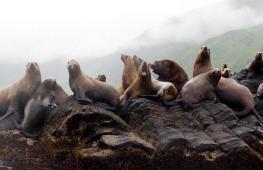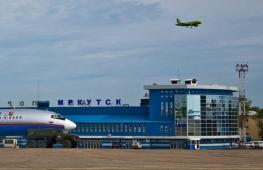The longest river in New Zealand. New Zealand River and Lakes
Page 1
Introduction
In my work, I will try to tell the basic information about New Zealand. This state I chose because it is not studied in the school program, but, nevertheless, it is very interesting for all geographical estimates. Below are the basic information about New Zealand.
§ Capital of New Zealand: Wellington
§ Square of New Zealand(73rd in the world): 269,000 sq.km. (including North (115,000 sq. Km) and southern (151, 000 sq. Km.) Islands, Stuart Islands and Chatman, a number of small islands)
§ The highest point: Mount Cook- 3.754 m.
§ Coastline of New Zealand: 15, 134 km.
§ Long River New Zealand: Waikato - 425 km.
§ The largest natural reservoir of New Zealand: Lake Taupo, Depth - up to 163 m., Area 606 sq. Km.
§ Natural resources: Iron Ore, Gas, Oil, Gold, Coal, Wood, Quartz Sand.
§ Natural dangers: Frequent, but rarely strong earthquakes, volcanic activity, missing snakes and poisonous insects.
§ Population of New Zealand (120th in the World): 3,800,000 (2000), 84% of the population lives on the North Island, 85% of the population lives in cities. Life expectancy: Men 74.85, women 80.93. Population growth: 1.17% (2000)
§ Birth rate: 14,28 / 1000 (2000)
§ Mortality rate: 7.57/1000 (2000)
§ Official language New Zealand: English, Maori Currency unit: New Zealand Dollar (NZD)
§ Government system: parliamentary democracy
§ Telephone code New Zealand: 64
Geographical position
State New Zealand Located in southwestern Pacific. The main territory of the country is two islands, having respective names - the island of South and the island of the North. South and North Islands are divided strait Cook. In addition, the country includes 61 other islands, significantly smaller in their area. The total area of \u200b\u200bthe country is 268 680 sq. M. km. (What includes in addition to the area of \u200b\u200bthe main islands, the same area of \u200b\u200bthe islands of antipodes, Auckland Islands, Bounty Islands, Campbell Islands, Chatham Islands and Kermadek Islands). It makes it a little less in the area than Italy and Japan, and a few more UK. Length coastline New Zealand is 15 134 kilometers.
South Island is an the largest islandIn addition to New Zealand. It lives about one fourth part of the country's population. Along the islands from the north to south stretches mountain Ridge Southern Alps, most high peak Koloti is mountain Mount Cook or aooras, height 3754 meters. Besides Nee. Southern Island There are 18 more peaks with a height of 3000 meters. East End Islands are more flat and almost completely occupied by agricultural farms. West Coast Much less tight. There are huge arrays of almost untouched nature with the virgin and animal world. The western part of the famous is also numerous national Parks, fjords and glaciers, sliding from the southern Alps slopes right in Tasmanovo Sea.
North Island Significantly less mountainous than southern. Most high point North Island is active volcano RupehuHeight 2797 meters. North Island has a high volcanic activity, from six volcanic zones in the country, five, are located on it. In the heart of the North Island is located lake Taupomost big Lake in New Zealand. From him originates river Waikato, The length of which is 425 kilometersWhat makes her the longest river in New Zealand.
Lake Taupo, Center of the North Island
In New Zealand there is a huge number of rivers, but at the same time, of them, the overwhelming majority is small rivers. So, during the trip around the Taranaci volcano, located on the island of the North, the new river is occupied at about every kilometer. In general, there are about 40 large river systems on the island of South, and on the island of North - about 30.
Most of the Rivers of New Zealand have either raindrops or snowmall. Many of them take their beginning in highlighted areas, staining after plains and falling, in the end, or in Tasmanovo Sea, or in Pacific Ocean.
The longest river of the country is the River Oakato, the length of which is 425 km. The largest river on the flow rate of water is the club (about 614 m / s).
Through many rivers that have wide floats or on which there are water-holding dams, numerous bridges permanent. So, through the Rocaia River is the most long bridge In New Zealand (1757 m). The total length of the rivers deposited on New Zealand cards is about 180 thousand km.
From a long time, New Zealand rivers are widespread. Representatives of the indigenous New Zealand people, Maori, and, besides, the first European colonists used rivers for movement. In total, in New Zealand, about 1609 km of rivers are navigable, but at the same time most of them do not play important today transport role. Most rivers are used for tourist purposes today and recreation: rafting, rowing, swimming in kayaks. New Zealand is one of the few countries of Oceania in which hydroelectric production is developed. Many New Zealand rivers have numerous hydroelectric power plants.
|
new Zealand WORLD River, New Zealand River
In New Zealand, there are a large number of rivers, but the overwhelming majority are small robusts. So, during the trip around the Taranaci volcano, located on the island of the North, the new river is occupied at about every kilometer. The whole, on the island of South there is about 40 major river systems, and on the island of the North - about 30.
Most of the Rivers of New Zealand have either raindrops or snowmall. Many of them take their origin in highlighted areas, then staining on the plains and falling, in the end, or in Tasmanovo Sea, or in the Pacific Ocean.
The longest river of the country is the River Oakato, the length of which is 425 km. The largest river is considered to be a club (about 614 m³ / s).
Through many rivers that have wide floats or on which there are water-holding dams, numerous bridges permanent. So, the longest bridge in New Zealand is held across the Rakaiya River (1757 m). The total length of the rivers deposited on New Zealand cards is about 180 thousand km.
Since a long time, new Zealand rivers are widely used. Representatives of the indigenous New Zealand people, Maori, as well as the first European colonists used rivers for movement. In total, in New Zealand, about 1609 km of rivers are shipping, but most of them currently do not play an important transport role. Most rivers are currently used in tourist purposes and to relax: rafting, rowing, swimming in kayaks. New Zealand is one of the few countries of Oceania in which hydroelectric production is developed. Many New Zealand rivers have numerous hydroelectric power plants.
- 1 list of twenty longest rivers
- 2 Other rivers are longer than 100 km
- 3 cm also
- 4 Notes
- 5 Links
List of twenty longest rivers
Main source: http://www.teara.govt.nz/en/diagram/14687/new-zelands-longest-rivers
|
|||
| Name river |
Length (km) | Length (mile) | Pool area (km²) | Blinds B. | Proceeds by region | |
|---|---|---|---|---|---|---|
| 1. | Whicato | 425 | 264 | 13 701 | Tasmanovo Sea | Whicato |
| 2. | Club | 322 | 200 | 21 960 | Pacific Ocean | Otago |
| 3. | Wanganui | 290 | 180 | 7380 | Tasmanovo Sea | Manavatu-Wanghanui |
| 4. | Taii | 288 | 179 | 1865 | Pacific Ocean | Otago |
| 5. | Ranntikei | 241 | 150 | 3186 | Tasmanovo Sea | Manavatu-Wanghanui |
| 6. | Mataura | 240 | 149 | 728 | strait Fovo. | Soutland |
| 7. | UIAU | 217 | 135 | strait Fovo. | Soutland | |
| 8. | Whitaki | 209 | 130 | 11 820 | Pacific Ocean | Otago, Kanterbury |
| 9. | Clarence (River) | 209 | 130 | 3289 | Pacific Ocean | Marlborough |
| 10. | Oreti (river) | 203 | 126 | 1160 | strait Fovo. | Soutland |
| 11. | Rangeita (River) | 193 | 120 | 2849 | Pacific Ocean | Bay-Foci, Hox Bay |
| 12. | Manawat (River) | 182 | 113 | 5947 | Tasmanovo Sea | Manavatu-Wanghanui |
| 13. | Buller (River) | 177 | 110 | 6501 | Tasmanovo Sea | West Kost. |
| 14. | Tears (or Wihou) | 175 | 109 | Pacific Ocean | Whicato | |
| 15. | Mohaka (River) | 172 | 107 | 2357 | Pacific Ocean | Hox Bay |
| 16. | Wirau (River) | 169 | 105 | 4222 | strait Cook | Marlborough |
| 17. | UIAU | 169 | 105 | 3289 | Pacific Ocean | Kanterbury |
| 18. | Fangahah | 161 | Tasmanovo Sea | Manavatu-Wanghanui | ||
| 19. | Uaimakariri. | 161 | 100 | 2590 | Pacific Ocean | Kanterbury |
| 20. | Mokau (River) | 158 | 98 | 1424 | Tasmanovo Sea | Taranaki |
Other rivers are longer than 100 km
- Avtere.
- Apaarima
- Matooek
- Ngarroro (River)
- Pateie
- Rakai
- Rankitata
- Ruamahanga
- Tukituki
- Turakin
- Wiroa (Bayi-captivity)
- Wiroa (Nortland)
- Hurunii
see also
- List of oceania rivers
Notes
- 1 2 3 Young, David. Rivers. How New Zealand Rivers Are Formed (English). TE ARA - THE ENCYCLOPEDIA OF NEW ZEALAND. Verified April 2, 2010. Archived from the original April 22, 2012.
- Murray, D. L. (1975). "Regional Hydrology of the Clutha River" (Journal of Hydrology (N.Z.)) 14 (2): 85-98. Checked 2010-04-02.
Links
- TE ARA - THE ENCYCLOPEDIA OF NEW ZEALAND. NEW Zealand's Longest Rivers (English)
| Oceania countries: rivers | |
|---|---|
|
Australia Vanuatu Kiribati Marshall Islands Micronesia Nauru New Zealand Palau Papua - New Guinea Samoa Solomon islands Tonga Tuvalu Fiji. |
|
| Dependent territories | |
|
American Samoa Hawaii Guam Cook Islands Coconut Islands New Caledonia Norfolk Niue Island Petcairn Niue Island Mariana Islands Tokelau Wallis and Futun French Polynesia |
new Zealand Rivers, New Zealand WORLD River, New Zealand River
River New Zealand information about
28-08-2015, 21:08
- Club
The second on the length of the New Zealand River, the most long river South Islands. It occurs in the south-south-east direction for 338 km through the territory of the Otago region, depressing 75 km south-west of Danidin to the Pacific Ocean. The river flows through a picturesque area and is largely known due to its history associated with the Golden Fever Epoch. - Mataura
River in the southern region of the South Island of New Zealand. The length of the river is 190 kilometers. The river takes his beginning in the mountains, south lake Wakatipu. From there, it flows through the city of the mountains in the southern direction. After that, the river flows through the city of Mataura and flows into the Pacific Ocean through the Bay of Tetoez on southern coast Islands. - Ranntikei
River in New Zealand. It takes on the island of North from north to southeast for 240 km, after which the sea falls into Tasmanovo. The source of the river is southeast of Lake Taupo, within the boundaries of the Kaimanava Range. After that, ranjects occur in the central plateau in the southern direction through the cities of Taikhapa, Mangawka, Hanterville, Marton and Bulls. - Taii
Fourth on the length of the New Zealand River. It takes on the region of Otago on the island of South. The source of the river is located in the mountains of Lamemberlo, from where Tahii flows in the northern direction. At the Mountains Pillar, the direction of the river changes to the southeast. Approximately 32 km south of Danidin Taii in the Pacific Ocean. The length of the river is about 288 km, of which the last 20 km of shipping. - UIAU
River in New Zealand. The Soutland region is proceeded on the South Island. The source of the river is located in Lake Te-Anau, eliminating from which WIAU flows into Lake Manapoury, located about 10 km south. After that, the river flows in the southern direction for 70 km, after which it flows into the Strait of FOVO, about 8 km south of social Point Tautpere. The Length of Waiau is about 217 km. - Whicato
The largest river of New Zealand, a length of 425 km, flowing in the central part of the North Islands and flowing into the sea in Tasmanovo. - Whitaki
Large river on the southern island in New Zealand. Its length is about 110 kilometers. It is the main river of the Mackenzie basin. For Uaitaki is characterized by a channel dummy through Lake Benmore, Amore and Whitaki. Benmore and Avmore were built on the lakes of the hydroelectric power station. - Wanganui
River in New Zealand. Proceeds by North Isle From the north to southeast, after which the sea falls into Tasmanovo. The length of the river is 290 km. The source of the river is located on the northern slopes of the mountain Tongariro. - Fakatane
River in New Zealand. Because of the Bay-Folly region on the North Island. The source of the river is located in the mountainous terrain near Lake Waicaremian. Flowing strictly north, through national Park Temorera. In the area of \u200b\u200bthe city of Fakataan, in the bay of captivity of the Pacific Ocean. - Avon
Takes through the center of Christchurch, on the South Island of New Zealand. The origins of the river begin at the western border of the suburbs of Evonhead, where the river feeds on underground sources. The main watercourse of the river is formed when merging at the origins of the streams of Uairarapa (Maori Wairarapa), Uaimairi (Maori Waimairi), Ocaver and Ilam. The river flows into the Estaria Avon Hitcot on eastern coast New Zealand, which she forms with the Hitchot River.
The river network on New Zealand Islands is very thick. The precipitation falls a lot, and rivers, especially on the North Island, have rain nutrition. On the southern island along with rains great importance It has melting of snow and ice. Evaporation is small, and the river multi-wheeled. Only on the plain of Canterbury, catastrophic floods caused by the rapid melting of snow and ice occur. As a rule, rivers begin in the mountains and pave their way along high and steep slopes, so they differ in the rapid flow and often form thresholds and waterfalls. Going to the plains, they slow down their current, are often divided into sleeves and put the material brought with them from the mountains, gurgling bars and melels. In this regard, the rivers have a slight shipping value and are used for these purposes only on separate parts from each other. Some of them take their origin from the lakes and in this way, as it were, naturally regulated, which is of great importance in hydrotrolation, and hydroenergy is the main type of energy in New Zealand. As the country has small sizes, the river is small for its length. The longest are Whicate 354 km on the North Island and the club 338 km in South. Many in the country and picturesque deep lakes. They have a variety of origins, but are mainly divided into two types: volcanic on the North Isle of Taupo, Rotorua and Glacier at the foot and in the intermoreflakes of the southern Alps. The latter fill the depressions developed by the ancient glaciers, and are distinguished by significant depths. Thus, the depth of Lake Wacotipu reaches 379 m, Manpauri 445. The main mother breeds on which the soil are formed are represented by gates, limestones, sandstones, volcanic lava, tuffs and ashes. As a rule, the soil differences formed on them are sufficiently provided with mineral nutrients. For subtropical areas of the country, where there are especially many moisture and heat, are characteristic of yellow-beams. A distinctive feature of this type of soil is the presence of a large number of organic substances, which makes them very fertile and suitable for use in agriculture. These soils are developed not only in the most extreme northern part of the country, on the Auckland Peninsula, but also on the plains in the vicinity of the Captivity Bay, in the southeastern part of the North Island and in Westland Province on the South Island. On the once covered steppe vegetation, and now with a variety of cultures of Canterberian plain, black soil has been developed with a variety of cultures. These are the most fertile soils of the country. They contain a lot of humus and necessary for plants of minerals. For deep boilers, the island of southern is characterized by brown soils, also fertile and widely used for growing different crops. In the river valleys, alluvial soils were formed on applied formations, whose fertility is also quite significantly. In wetlands, where there is excess moisturizing, peat soils are common, and in mountainous areas Mining and mountainwalls.



